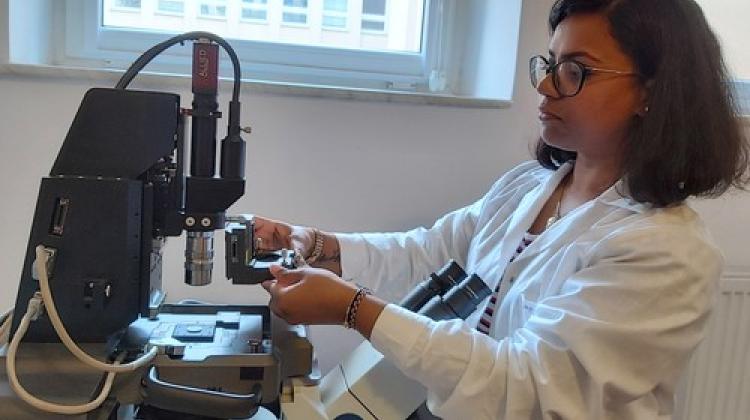Raman spectrum is a harbinger of cancer
 Photo: Fotolia
Photo: Fotolia
The patient\'s blood analysis by Raman spectroscopy will allow to detect cancer tumours at an early stage, according to Dr. Edyta Wolny-Rokicka, MD, from the Regional Multidisciplinary Hospital in Gorzów Wielkopolski.
Dr. Edyta Wolny-Rokicka and Alicja Defort from the Science and Technology Park of the University of Zielona Góra used a Raman spectrometer to conduct a series of analyses of blood platelets of patients with lung cancer. Samples were collected before and after surgery, before and after radical radiation therapy, from patients with metastatic cancer and, for comparison, from healthy volunteers.
Raman spectroscopy allows to analyse biological systems and identify chemical changes occurring at the level of cells or tissues. Based on the intensity of the bands and their location, changes at the cellular level can be identified using the laser light that interacts with matter.
In the case of the samples tested in Zielona Góra the target was p-selectin, an adhesion protein located in the platelets and vascular endothelial cells. When many abnormal blood vessels develop in a tumour, the p-selectin level increases.
According to Dr. Wolny-Rokicka, analysis of p-selectin expression by Raman spectroscopy may be a potential marker to detect the presence of tumours in the early stages, assess the progress of therapy, and make a prognosis. In the future it could be used in screening tests. Further research is planned to be carried out on more people with different types of cancer.
PAP - Science and Scholarship in Poland
pmw/ agt/ kap/
tr. RL
Przed dodaniem komentarza prosimy o zapoznanie z Regulaminem forum serwisu Nauka w Polsce.

















